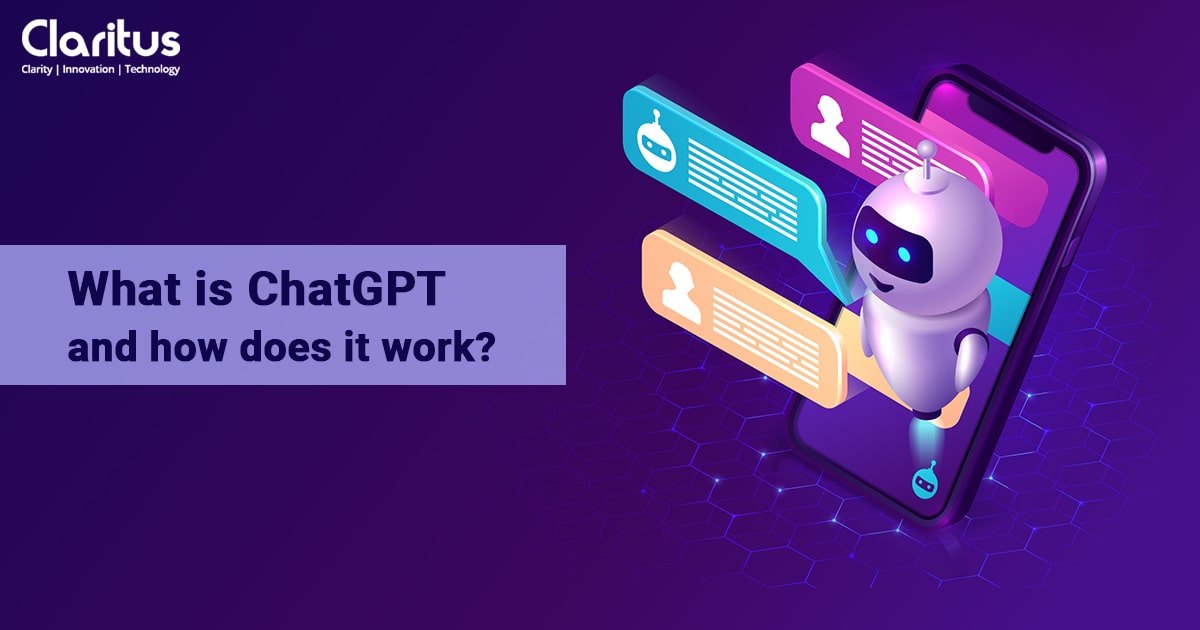What is ChatGPT and how does it work?

ChatGPT is an artificial intelligence (AI) programme, a chatbot system to be precise, which has been created by an organization called OpenAI. The artificial intelligence research company was founded in the year 2015 by Elon Musk, Sam Altman, Greg Brockman, Ilya Sutskever and Wojciech Zaremba.
ChatGPT is one of the company’s programmes and was introduced in the year 2018. It’s based on GPT-3, which is the third model among the others in the natural language developing and refining project.
GPT-3 architecture is utilized by the technology, a pre-trained, large scale language model to sort through and analyze a humongous pool of internet data, information and contents, a knowledge base to be delved into as and when required.
It demonstrates the capabilities of a very large and powerful AI system. Questions can be asked to it unceasingly and some of the answers are quite useful. However, OpenAI warns that many of the answers which appear plausible may entirely be wrong. Actually, ChatGPT intrinsically doesn’t know anything.
It’s in fact, an AI, that has been taught to perceive and comprehend patterns in almost limitless and boundless sections of text available from the internet. Then, more training is provided to it by experts so that, eventually, it furnishes convenient as well as more understandable conversation and chats in common language. Due to this proficiency in communication, it’s in a class of its own.
Functioning of ChatGPT
ChatGPT is based on GPT-3 and GPT-3.5 which are AI technology dependent large language models being able to generate human-readable text. It is taught by feeding immense and hefty dataset of written works available with the internet. The technology makes use of a deep learning technique, known as “transformer architecture”, to analyze many terabytes of data holding billions of words so that answers can be formed to questions or prompts.
GPT-3 and GPT-3.5 are instructed automatically for weeks to furnish text based on what they have read, with extremely large computer power. For instance, the training process may feed paragraphs indiscriminately with deletion of certain words and ask the AI to replace them.
The results are matched with the original words and the process is repeated multiple times so that eventually the chatbot has a sophisticated ability to deliver great text. Although automatic to a great extent, it’s not entirely so. Human reviewers assess the initial results of chatGPT and the process is called “fine-tuning”. Then they apply guidelines for models of OpenAI to generalize from.
The fine-tuning process is applied with regard to text completion, language translation, summarization, question answering and finally human diction.
The chatbot functions in the same manner as other AI generator tools such as DALL-E 2, Mid-journey and Stable Diffusion. However, just like these keep generating images which are sometimes unrealistic, chatGPT can also be inaccurate many a time.
Some important features of ChatGPT:
1. Text translation:
It can translate texts into various languages like, English, Spanish, Russian, Italian, French, German, Chinese, Japanese, Korean and Arabic etc.
2. Conversational AI:
It responds in a human like conversational terminology which immensely helps in receiving and comprehending output. It also aids organizations with eCommerce sites that desire to incorporate conversational interfaces for chatbots, virtual assistants or other different applications.
3. Sentiment analysis:
It can efficiently recognize sentiment or human feeling while screening text. For instance, from a customer review it can identify whether the person has left a positive, negative or neutral comment. This feature is immensely helpful for market research companies to garner data on their services and products.
4. Parts of speech tagging:
Since it’s a lot about language, chatGPT is an expert in grammar. It’s the go-to chatbot for any query on grammar, including sentence structures, nouns, verbs or adjectives.
Some uses:
It has the ability to write codes, translate and debug. It can also suggest party ideas or songs and write a captivating prose or poem. On the one hand It may aptly write an essay for a school or college project while on the other hand, it may generate a recipe for a great dish. If required, it can also create lyrics for a song.
Conclusion:
The craze around ChatGPT has attained dizzy heights and it definitely has a huge potential in the foreseeable future. With so many functionalities and benefits in daily life, only the sky is the limit.
